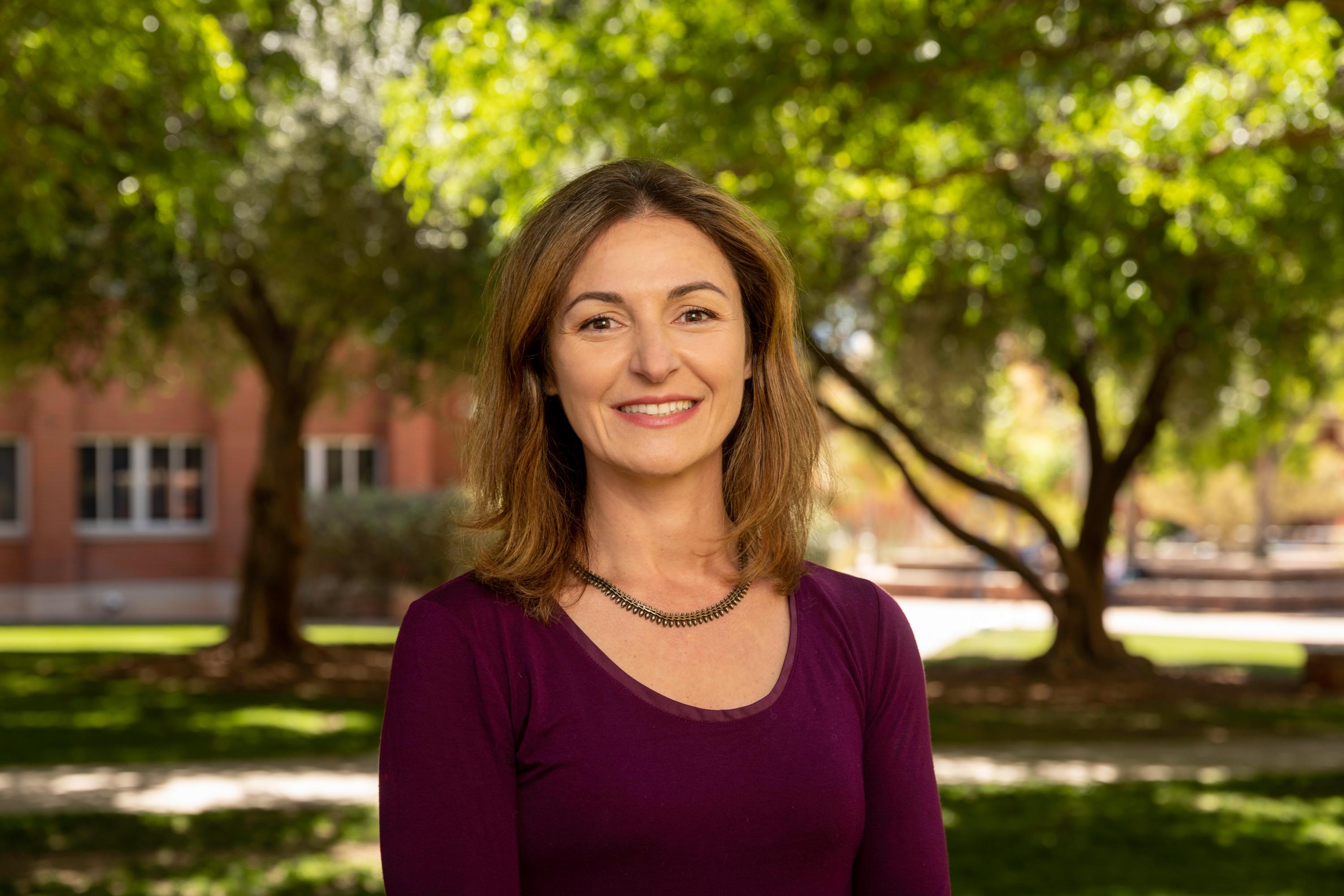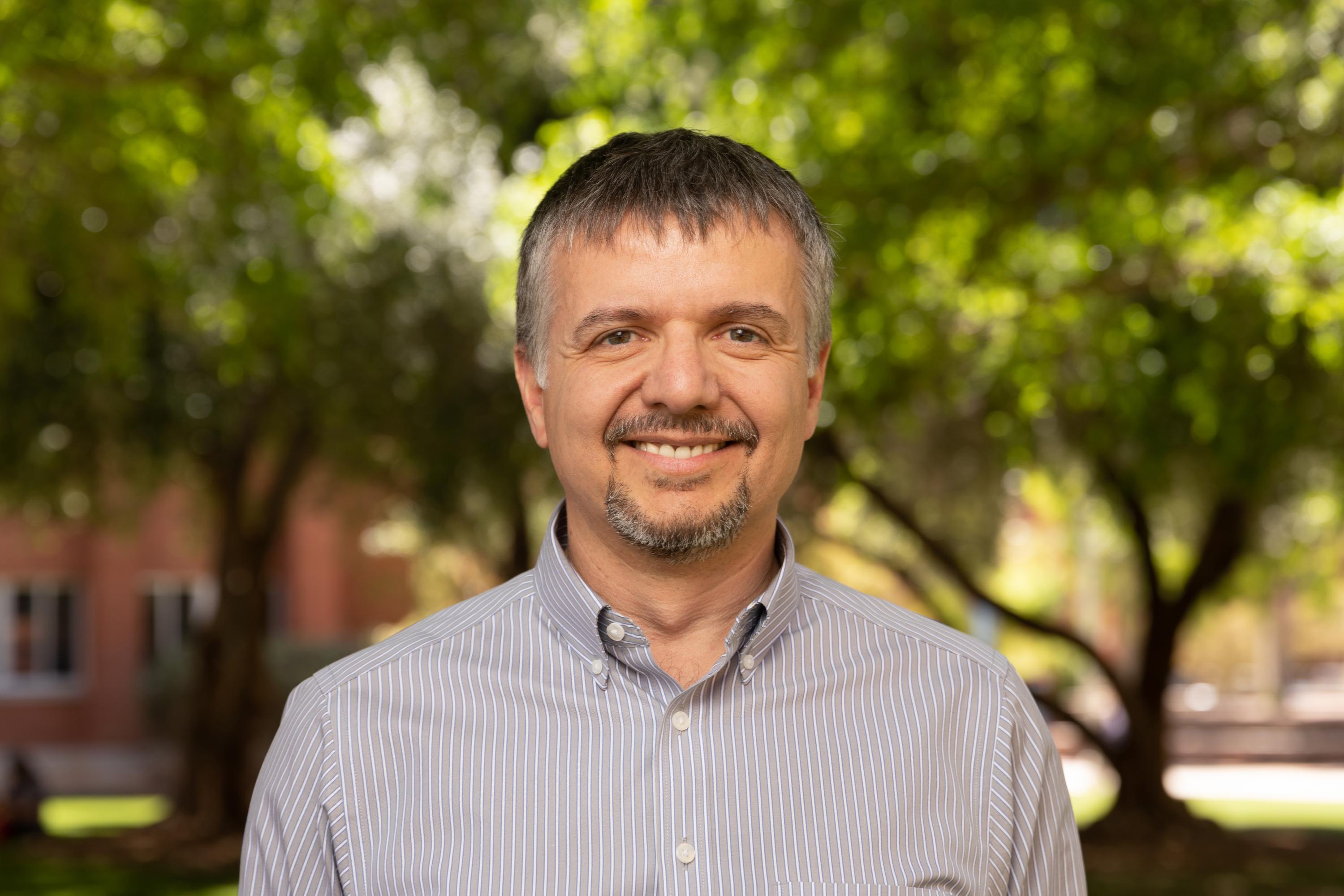The College of Sciences is pleased to announce the appointment of Feryal Özel as chair of the School of Physics, effective August 2022.
Özel is a professor of astronomy and physics and associate dean for Research at the University of Arizona’s College of Science. Her research focuses on theoretical, computational, plasma, nuclear, and high energy astrophysics — along with black holes, neutron stars, and high performance computing.
“I am delighted to join Georgia Tech, an institution with strong commitments to basic research, education, and societal impact,” Özel said. “I am looking forward to contributing to its continued growth and its thriving atmosphere.”
“Throughout the search process for our new chair, Feryal continually impressed me with her insights and vision,” said Susan Lozier, dean of the College of Sciences and Betsy Middleton and John Clark Sutherland Chair. “I am very much looking forward to working with her in the next few years to advance the teaching and research missions of the School.”
“I will also take this opportunity to extend my many thanks to the search committee and heartfelt gratitude to Mike Schatz for his leadership of the School since spring 2020,” Lozier added. “Mike has admirably steered the School as interim chair and I have appreciated the integrity, creativity, and commitment that he has consistently demonstrated.”
Revealing the black hole at the heart of the Milky Way
A theoretical astrophysicist, Özel is also a founding member for the Event Horizon Telescope (EHT) Collaboration, where she has led the Modeling and Analysis Group, and has served on the EHT Science Council since its inception.
On May 12 of this year, she led EHT’s unveiling of the first image of the supermassive black hole located at the center of our Milky Way galaxy — Sagittarius A* — Sgr A* (pronounced "sadge-ay-star") for short, which is four million times more massive than our Sun.
The long-anticipated look at Sgr A* was produced by a global research team using observations from a worldwide network of radio telescopes, with findings published in The Astrophysical Journal Letters. According to EHT, the work provided “overwhelming evidence that the object is indeed a black hole, and yields valuable clues about the workings of such giants” thought to reside at the center of most galaxies.
“We see a bright ring surrounding complete darkness, the telltale sign of a black hole,” Özel said. “Now, we can confirm we are looking directly at the point of no return." As light is curved by the powerful gravity of the black hole, glowing gas creates a signature halo around a dark “shadow” central region. “It seems that black holes like doughnuts,” Özel added.
Özel said she "fell in love" with Sgr A* two decades ago, while working on her dissertation as a graduate student at Harvard University. Back then, she wondered if we could actually glimpse a black hole directly — and decided to take on the challenge.
Her arrival to Georgia Tech will also bring her research partner and spouse, Dimitrios Psaltis, to the School of Physics faculty. “I am very excited to be a part of the Georgia Tech community and help spearhead new initiatives in cutting-edge science and technology,” said Psaltis, a fellow astrophysicist and professor who chairs the Theoretical Astrophysics Program at the University of Arizona. Psaltis is also the founding Project Scientist of the EHT.
As early as the late 1990s, Özel and Psaltis worked together to explore the feasibility of taking a picture of Sgr A*. In 2012, they hosted the inaugural meeting of the Event Horizon Telescope in Tucson, which established the worldwide collaboration.
"Many of the early ideas came out of our research group, including the computational tools and infrastructure for the simulation library, as well as the proof of principle for testing Einstein’s theory," said Psaltis, who is also principal investigator of the international Black Hole Partnerships for International Research and Education (PIRE) Project. "Everything, from running the telescopes to analyzing the data, is a collective effort. Each one of us has their hands in basically everything, and we made it work."
Meet Feryal Özel
Born and raised in Istanbul, Turkey, Feryal Özel received her B.S. in physics and applied mathematics at Columbia University and her Ph.D. in 2002 at Harvard University. After completing a NASA Hubble Postdoctoral Fellowship at the Institute for Advanced Study, Özel joined the University of Arizona faculty in 2005, where she has worked as a professor of astronomy and physics, and as associate dean for research in the College of Science.
She is co-investigator of the NASA Neutron star Interior Composition Explorer (NICER) Mission and has twice earned the American Astronomical Society Bruno Rossi Prize (NICER and EHT collaborations), along with a number of honors including a joint Breakthrough Prize in Physics, and NSF Diamond Achievement Award.
In 2016, Özel was named a Guggenheim Fellow, as well as a visiting professor and member of the Harvard University Black Hole Initiative. In 2017 she was honored as the Columbia University Annual Bishop Lecturer. She has also served as a Radcliffe Institute for Advanced Study Fellow at Harvard University and as a Miller Visiting Professor at University of California, Berkeley.
Özel is a member of the American Astronomical Society and an Elected Fellow of the American Physical Society. She is past chair of the NASA Astrophysics Advisory Committee and NASA Lynx X-ray Telescope Science and Technology Definition Team, and currently serves as an advisor of NANOGrav and the Miller Institute, as well as a member at Aspen Center for Physics.
Özel and Psaltis enjoy running marathons and biking long distances together.
Learn more about Feryal Özel and Dimitrios Psaltis.
About Georgia Tech
The Georgia Institute of Technology, or Georgia Tech, is a top 10 public research university developing leaders who advance technology and improve the human condition. The Institute offers business, computing, design, engineering, liberal arts, and sciences degrees. Its nearly 44,000 students representing 50 states and 149 countries, study at the main campus in Atlanta, at campuses in France and China, and through distance and online learning. As a leading technological university, Georgia Tech is an engine of economic development for Georgia, the Southeast, and the nation, conducting more than $1 billion in research annually for government, industry, and society.
For More Information Contact
Writer and Media Contact:
Jess Hunt-Ralston
Director of Communications
College of Sciences at Georgia Tech




